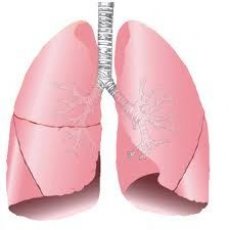Medical expert of the article
New publications
A new method of treating severe lung diseases has been developed
Last reviewed: 01.07.2025

All iLive content is medically reviewed or fact checked to ensure as much factual accuracy as possible.
We have strict sourcing guidelines and only link to reputable media sites, academic research institutions and, whenever possible, medically peer reviewed studies. Note that the numbers in parentheses ([1], [2], etc.) are clickable links to these studies.
If you feel that any of our content is inaccurate, out-of-date, or otherwise questionable, please select it and press Ctrl + Enter.

Australian scientists have reported a new treatment for some serious lung diseases, including emphysema, asbestosis and severe asthma. The researchers found that cells from the human placenta can significantly reduce lung infections and help heal scars and disease-causing growths in the lungs.
A team of scientists from the Lung Research Institute in Western Australia have already completed a series of tests on laboratory mice and are now preparing for clinical trials on humans. According to Professor Euben Moodley, cells from the placenta can successfully imitate other cells in the body, which until now was thought to be possible only for stem cells.
"We found that there are cells on the walls of the placenta that develop with the embryo, but they are not part of the embryo. They are on the placenta and they are part of the placenta," he says. "These cells can successfully differentiate into lung cells, not completely, but enough to fight disease."
Australian scientists say the experiments on mice were even more successful than expected and are now optimistic about achieving success in humans.
As reported by the Institute of Lung Research, a control group of laboratory mice was exposed to the anti-cancer drug bleocymin, which provokes inflammation of the lungs. As a result of inflammation of the lungs, scars are formed on their walls, which are very similar to those scars that remain in the human body.
However, after exposing the rodents' lungs to placental cells, the scars disappeared very quickly. "I think this method of exposure will be very useful for patients on ventilators," Moodley believes.
Of course, the developers say, it would be possible to use stem cells to treat scars, but there is an ethical problem associated with this method. In the case of placental cells, there is no such problem.
 [ 1 ], [ 2 ], [ 3 ], [ 4 ], [ 5 ], [ 6 ], [ 7 ], [ 8 ], [ 9 ]
[ 1 ], [ 2 ], [ 3 ], [ 4 ], [ 5 ], [ 6 ], [ 7 ], [ 8 ], [ 9 ]

